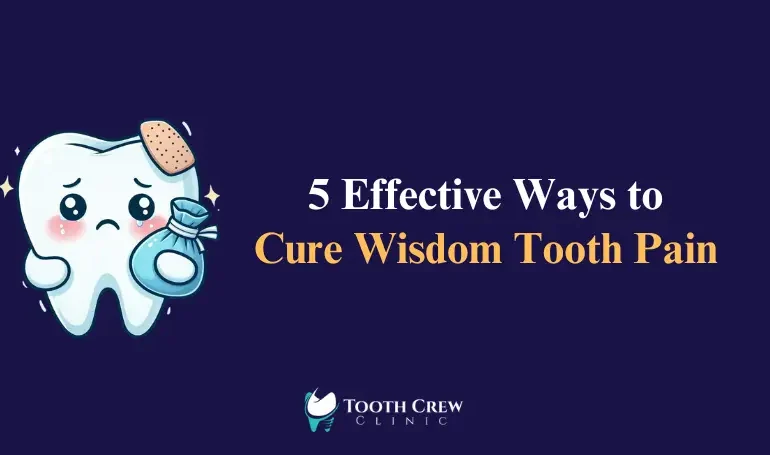When people think about methods to enhance their fitness, they frequently reflect on doing a greater workout, ingesting more greens, and slumbering extra. Taking better care of your gums and teeth is most likely not on the list, but it has to be. Dental and medical doctors both agree that gum health is crucial now, not just in your mouth but in your whole body.
Everyone knows that taking proper oral care for teeth and gums is the best approach to avoid germs and cavities. The majority agrees upon the intention of keeping their mouth and enamel healthy by brushing and flossing at least two times a day. Avoiding cavity-causing meals, smoking, and seeing their dentist on a normal basis can maintain good health. Many are unknown to the various motives why they ought to care for their enamel and gums.
What Is Gum Disease?

Gum disease, usually known as periodontal disease, is a degenerative mouth and gums condition that develops in stages. It is normally because of insufficient brushing and flossing conduct, which permit plaque (a sticky layer of microorganism) to build up at the enamel and harden. It starts off evolving with puffed, pink, and bleeding gums.
How Can Gum Disease Affect Your Health?
Understanding how the mouth influences the body begins with understanding what can move wrong. The immune system assaults the contamination, causing the gums to become infected. The infection will stay except the contamination is managed. Over time, irritation and the chemicals it produces erode away at the gum and bone tissue that holds the teeth in location.
The simplest gum disorder can be dangerous on your social lifestyles while you address painful bad breath because of the food becoming stuck among your enamel and collecting bacteria and expelling chemical substances inclusive of sulfides. Gums bleeding causes excessive troubles in the body.
What Are The Causes Of Gum Disease?
Gum disease is specifically an outcome of the buildup of plaque on the tooth and the gum line. Plaque is a sticky masking made of microorganisms. The immune system responds to plaque with inflammation. This manifests as redness and gums swelling reason surrounding the tooth.
Everyone has a lot of germs in their mouths. Plaque is continuously generated by using some of these bacteria as they feed on the sugars inside the food and beverages you consume. Plaque creates a great surroundings for the germs that cause gum disorder and enamel decay to grow and multiply.
Additional reasons which could increase the chance of gum diseases are:
- Tobacco intake, from cigarettes, cigars, to chewing tobacco.
- Chronic alcohol consumption
- Various prescription drugs
- Nutritional deficits.
- Insufficient oral moisture (dry mouth).
- Genetics
Stages Of Gum Disease
Gum disease progresses in stages, each with distinct characteristics. Early detection and intervention are crucial for preventing severe complications. There are two major stages of gum disease:
- Gingivitis
- Periodontitis
Stage 01 – Gingivitis

Gingivitis is known as the initial stage of gum disease. It directly affects the surface layers of gums, especially where they meet the tooth. The deeper sections of the gums, teeth, and bone have not been damaged at this time.
The signs of gingivitis include:
- Bleeding
- Redness
- Swelling
The BIG NEWS is that gingivitis can be treated.
Don’t stop brushing if your tooth gums are getting red or swell. Keep brushing your teeth with a gentle toothbrush to remove the residual germs and plaque to tackle the condition. Soon, the gums should appear and feel healthier. If your gums do not recover or continue to bleed after four weeks, visit an oral health expert.
Stage 02 – Periodontitis

The gums’ motive is to guard the bone that supports your teeth in place. The term “periodontium” refers to a fixed set of gum and bone systems that surround and help the enamel, preserving them in location. The gum protects the periodontal tissue with the aid of generating a seal across the tooth’s neck.
Periodontitis are gum infections symptoms of the periodontium because of bacteria in plaque and the immune device’s reaction to it. Periodontitis is the extreme level of gum ailment which could expand if gingivitis isn’t always treated.
Periodontitis impacts 3 systems: the tooth root’s overlaying (cementum), the bone, and the fibers that join the enamel root to the bone. Gum disease can compromise the gum seal, inflicting gaps to develop between the teeth root and the gum. These areas are known as ‘periodontal pockets’. Bacteria become trapped in these pockets, causing more harm to the periodontium. Over time, bone is destroyed and removed, and wider gaps occur between the tooth and the gum. These gaps can appear as black triangles between the teeth, which an oral health practitioner cannot “fill”.
If periodontitis is not treated, the structures that preserve the tooth firmly inside the gum would possibly lose, inflicting the enamel to grow to be loose, uncomfortable, and perhaps need extraction.
Smoking and poorly managed diabetes are both risk factors for periodontitis.
Signs of periodontitis include:
- Bleeding gums.
- Red and swollen gums
- Receding gums
Symptoms may additionally include foul breath, bad flavor inside the mouth, pain whilst biting, and loose or moving teeth.
Make an appointment with your dental expert in case you suspect you have got any of these signs. They can discuss with you a way to care for your tooth. This allows the gums to reattach to the enamel. Early treatment of periodontitis can store impacted enamel.
If gum disease is not dealt with, it is able to have a destructive effect on your health, which includes your heart health and the progression of diabetes. Keeping your gums healthy additionally allows your coronary heart to be healthy.
What Are The Health Risks Associated With Gum Disease?
Gum problems are not only associated with dental challenges; but it could drastically impact your overall health.
- Heart Disease
- Diabetes
- Pregnancy complications
- Respiratory problems
- Alzheimer’s disease
How To Prevent Gum Disease?
Although professional dental care can also commonly save you its progression, excessive gum sickness is irreversible. Thus, it’s miles foremost to avoid the trouble within the first region. Regular teeth brushing prevents gum disorder by means of getting rid of the plaque that causes it. Remember to:
- Do not smoke. Chronic smoking increases the hazard of gum disease and gums cancer symptoms.
- Limit your alcohol intake. Chronic alcohol utilization is linked to gum ailment and oral cancer.
- Do no longer use antimicrobial mouthwash. Oral health is dependent on the overall microorganisms inside the mouth. Antibacterial cleaning ought to simplest be used as directed by your dentist.
- Brush your teeth twice a day. Ensure your toothpaste contains fluoride to protect your enamel.
- Floss your teeth twice a day. If flossing is difficult due to bridges or partial dentures, a water photo can be useful.
- Consume meals with low carbs and starches.
- See your dentist on a regular basis. Have your tooth wiped clean each six months.Gum disease patients may need to be seen more frequently.
Treatment for Gums Diseases
There are several treatments available to tackle each gum disease. Some of them are;
- Bleeding Gums Treatment
For mild gingivitis, stepped forward oral hygiene and professional cleanings are commonly enough. Your dentist may suggest a change in toothpaste or flossing methods as a treatment for bleeding gums.
- Receding Gums Treatment
Early intervention with scaling and root planing can assist in addition to recession. In superior cases, Gum recession treatment surgical procedures may be necessary to rebuild lost gum tissue.
- Gum Abscess Treatment
This requires prompt dental attention. Your dentist will drain the pus, do away with the contamination, and possibly prescribe antibiotics.
- Tooth Abscess
An abscessed tooth calls for instant dental care. Treatment may also contain antibiotics, root canal therapy, or tooth extraction relying on the severity of the infection.
Get Your Dental Check-up Done Timely!
Don’t wait till a toothache moves! Regular dental check-ups after every six months are vital for preserving accurate oral health. These check-ups allow dentists to find out and cope with gum disorder in its early stages, preventing it from wreaking havoc for your smile and regular fitness.
Early intervention is prime – it may save you pain, money on treatments, and doubtlessly guard your well-being by way of averting health problems related to gum disease. Schedule your dental appointment nowadays and maintain your brilliant smile!




